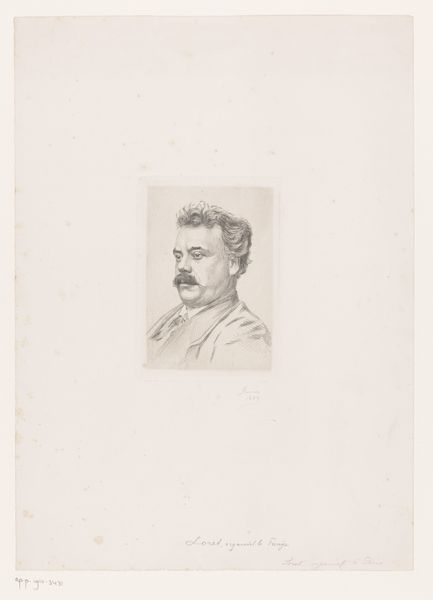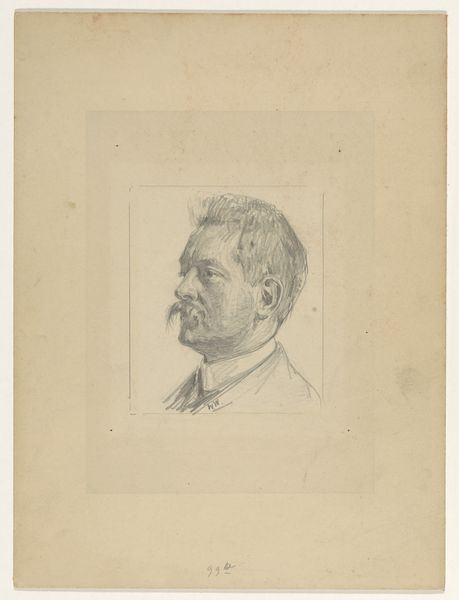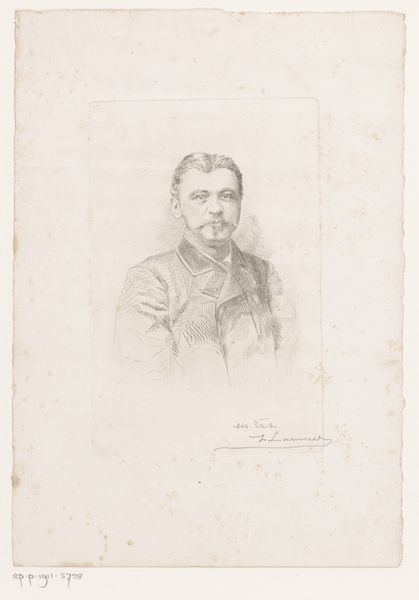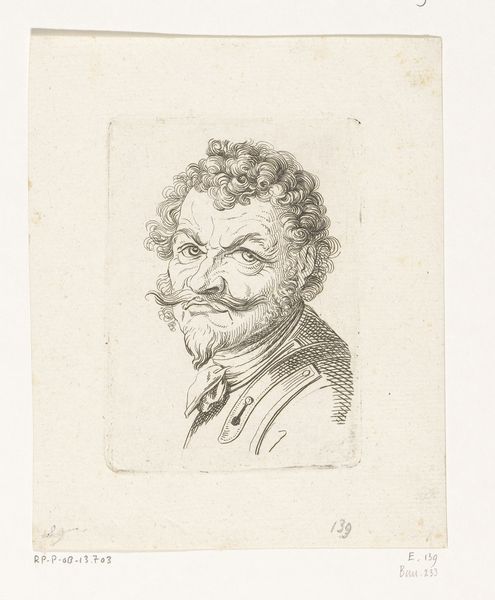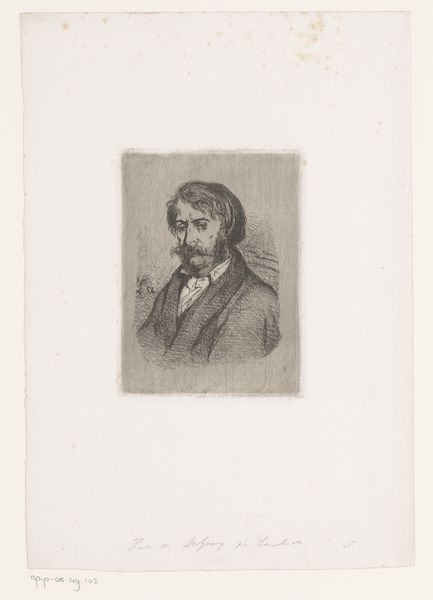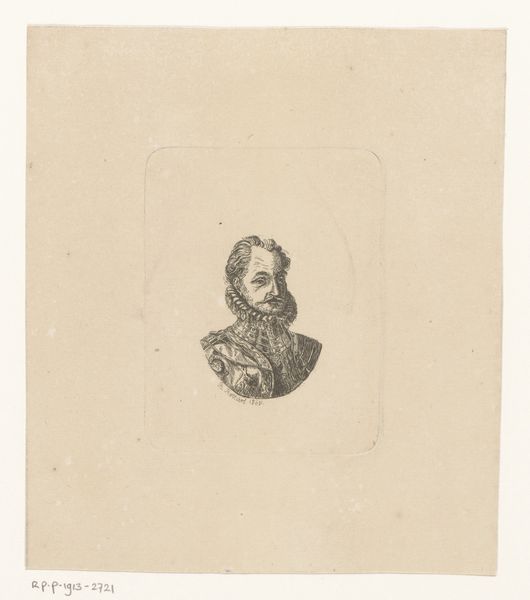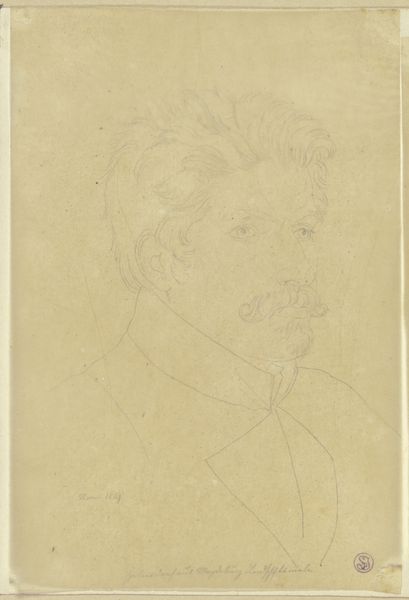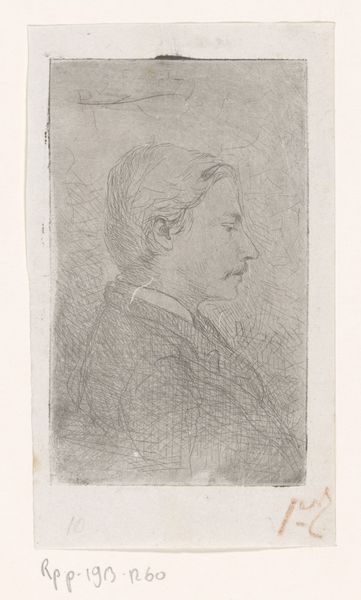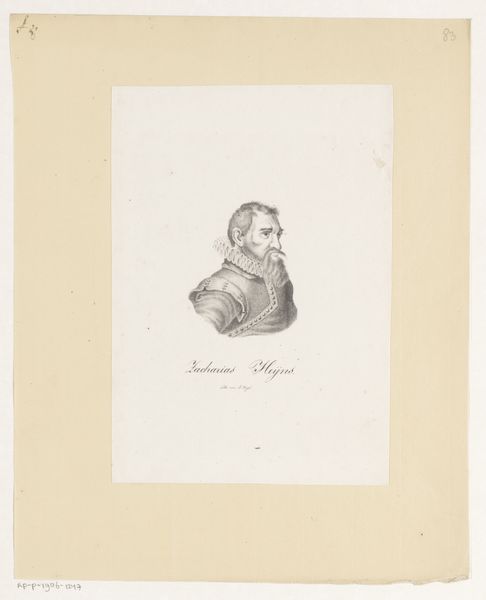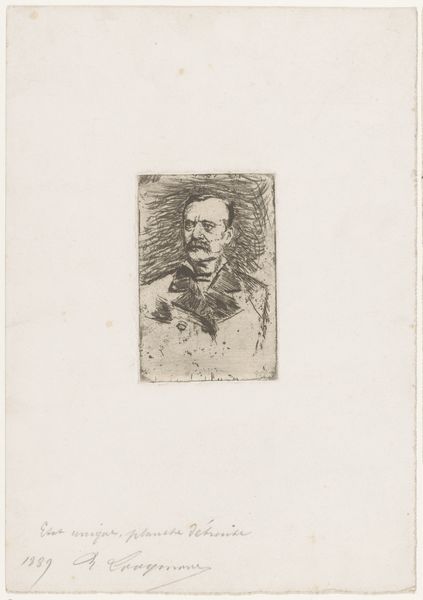
drawing, print, pencil
#
portrait
#
pencil drawn
#
drawing
# print
#
charcoal drawing
#
pencil drawing
#
pencil
#
academic-art
#
realism
Dimensions: 200 mm (height) x 130 mm (width) (bladmaal)
Curator: Here we have "P.F. Rist," a pencil drawing created in 1898 by Henrik Arnold Hamilkar Sørensen. Editor: There’s something both direct and melancholic in the sitter's gaze. The smoky, muted tones definitely contribute to the pensiveness. Curator: I find it helpful to consider this portrait in the context of late 19th-century Danish society. The artist captures not just the likeness of P.F. Rist, but also a certain bourgeois sensibility of the era, shaped by social norms, class distinctions, and, certainly, gender roles. It makes me wonder about his relationships. Editor: Notice how much negative space Sørensen uses; that generous emptiness frames the subject but also suggests a detachment, a focus on individual experience. It speaks of isolation. And look closely at the way the pencil renders texture. The rough strokes implying a kind of hurried materiality – it doesn't aim for an idealized image, it feels incredibly human and real. Curator: I agree. His expression seems somewhat…disappointed? Considering Sørensen's social circles, I'd bet P.F. Rist would have existed in networks of power. One wonders how his choices, both economic and social, affected those around him, especially women and the working classes. What systems was he complicit in? Editor: Absolutely, and it's rendered with an economy of means. He gets so much with just the strategic application of pencil to paper – you can almost feel the grain of the paper. I’m also drawn to the inscription on his right. Is that a tailor’s or makers’ mark? Perhaps the labor invested in his suit, even indirectly the labor of his tobacco, reveals something about his material comforts and privilege. Curator: That adds another layer, doesn’t it? These were markers of a very specific, powerful identity at the time. Thinking of contemporary dialogues around power and visibility, this resonates even now. Who gets their portrait made? Whose stories are valorized? Editor: It makes you think about what materials matter and how even "simple" drawings embed class, labor, and context into art. The choice to use modest materials challenges traditional oil painting which could signal elite taste. Curator: Seeing the world through both a socio-political lens and an attention to the physical object can certainly reveal complex narratives within art. Editor: Precisely, a material lens, even on paper, can focus your critique towards powerful analysis of art and society.
Comments
No comments
Be the first to comment and join the conversation on the ultimate creative platform.


